Photo

Two young Inuit boys and dog by the beach in Alaska, circa 1955. Photographed by Ivan Dmitri.
271 notes
·
View notes
Photo

BKM Intern Success Story: Rose Varona Camara
When did you intern at the Museum, and what was your role?
I interned in the Registrar’s Office in summer 2018.
I know that after you left your internship at the Brooklyn Museum you interned in the 20th and 21st century Design Department at the Milwaukee Art Museum in your home city. In what ways did your internship at the Brooklyn Museum prepare you for that internship?
Working in the Registrar’s Office was really valuable because it’s truly a behind the scenes look at how a museum prepares for exhibitions. At the Milwaukee Art Museum, I was able to witness the formulation of an exhibition from a curatorial point of view, but my experience at the Brooklyn Museum put that point of view into perspective. Without the Registrars and Conservators, these great exhibitions, temporary or permanent, that the public enjoys wouldn’t be able to happen. I feel that I began my internship at the Milwaukee Art Museum with a well rounded knowledge of curatorial practice. This is in part due to knowledge of how the Registrar’s office operates.
Where are you now?
I’m in my final week of grad school at The Courtauld Institute of Art in London. I’m studying Renaissance Italian Art. In my dissertation I intend to focus on the African Diaspora within visual art of the 14th and 15th Century Italy (though the specificity of my dissertation hasn’t been hashed out yet.)
I love graduate school. I really do! There’s freedom in studying a specialized subject and I look forward to going to my classes every week. Its engaging and challenging but in a good way! London has so much to offer as well. It’s similar to New York in that there’s always something to do and see and innumerable places to go (and eat). One can never be bored here - especially if one is interested in the visual arts.
Where do you want to go from there?
After leaving the museum and now in my studies I would say that my desire to have a career in an encyclopedic art museum is still my plan. Specifically, since being at the Brooklyn Museum I have realized that I would like a leadership role. Whether that be head of a department, curator, director, etc. I want to talk to people and teach people about why art is important, what it can do for the world, and what it has done historically, among other things.
Additionally, I want to break down the elitism surrounding these institutions.
Lastly, I want to be part of a future of museum professionals who want to keep art museums honest and representative of their surrounding communities. Because I can go on about it at length, I’ll just say that there’s much work to be done in art museums, still, to bring them up to speed in the 21st century.
What was the most memorable moment of your internship?
I couldn’t limit it to just one moment. Spending evenings walking across the Brooklyn Bridge, watching swing dancers outside the Brooklyn Public Library, attending a screening of West Side Story in Prospect Park, and generally exploring New York City with great friends that I made during the internship are at the top of my list. Mixed with the multiple “field trips” to art museums around the city including The Whitney and CitiBank - summer 2018 made for a whole slew of memorable moments.
What is something that you love about the Brooklyn Museum?
The exhibitions that the Museum puts on have been stellar. Being in the Registrars office, I was involved in the deinstallation of Radical Women: Latin American Art, 1960-1985. I also witnessed the opening of David Bowie Is. As my internship was coming to a close, the Registrars Office was preparing for the forthcoming exhibition Soul of a Nation: Art In the Age of Black Power.
What advice can you give to someone interested in interning at the Brooklyn Museum?
Be curious! The Citi Internship offers opportunities to see the art world from several angles. Take advantage of all of them. There could be an aspect of the art world that you had no idea about prior to the internship.
Posted by Monica Marino
#reblogged#bkminterns#paid internships#citi foundation#bkmeducation#registrar#art museums#brooklyn museum#bkmcareers#nyc#brooklyn#internships#art careers#museum careers#queued
39 notes
·
View notes
Photo

Margaret Lawrence, 105, Dies; Pioneering Black Female Psychoanalyst
She overcame many hurdles, including rejection by Cornell’s medical school, which told her a black man before her “didn’t work out.” (He had died.)
As a senior at Cornell in the 1930s, Margaret Lawrence had a nearly perfect academic record and expected to attend the university’s medical school. But Ms. Lawrence (she was Margaret Morgan at the time), the only black student in her class, was denied admission.
“Twenty-five years ago there was a Negro man admitted,” the dean of the medical school told her, “and it didn’t work out.” That man had come down with tuberculosis and died, thus failing to graduate. It was excuse enough to reject her.
She absorbed the shock, then applied to Columbia University’s College of Physicians and Surgeons. She was accepted, on the condition that she would not protest if white patients refused to be seen by her. (None did.) She agreed, and became the only black student in her class of 104, graduating in 1940.
She would still face discrimination, often being mistaken for a cleaning lady. But she went on to be a renowned pediatrician and child psychiatrist and the first African-American woman to become a psychoanalyst in the United States, according to NewYork-Presbyterian Hospital, where her career began.
When she died on Dec. 4 at an assisted living facility in Boston, she was 105. Her daughter Sara Lawrence-Lightfoot confirmed the death.

A student of Dr. Benjamin Spock’s, Dr. Lawrence was a pioneering therapist who treated young families in Harlem and in Rockland County, just northwest of New York City. There, in 1949, she and her husband helped establish a progressive, racially integrated cooperative community called Skyview Acres, where she lived for almost 70 years before moving to Boston to be near her daughter.
“She was an innovative, iconoclastic, unusual child psychiatrist,” said Ms. Lawrence-Lightfoot, a Harvard sociologist, who detailed her mother’s life in a book, “Balm in Gilead: Journey of a Healer” (1988).
“She understood that not just the interior life of a person but their context in the life of the family as well as forces in the community — particularly forces that are discriminatory — can leave people oppressed and marginalized,” Ms. Lawrence-Lightfoot said.
Dr. Lawrence became known for her empathy toward children. She saw her task as helping them develop what she called their “ego-strength,” their sense of self-worth.
“Strength abounds in Harlem,” Dr. Lawrence once said. “Three hundred years of oppression, and it survives.”
Margaret Cornelia Morgan was born in Harlem on Aug. 19, 1914. Her parents, the Rev. Sandy Alonzo Morgan, an Episcopal priest, and Mary Elizabeth (Smith) Morgan, a schoolteacher, were a middle-class couple living in Virginia at the time but had gone to Harlem for the birth because they had relatives there and believed that they would get better care there than in the Jim Crow South.
They moved back to Virginia after the birth, then eventually settled in Vicksburg, Miss., where Mr. Morgan had been assigned to a church. Margaret was raised there.

Margaret knew from an early age that she wanted to be a doctor. Her parents’ first child, a boy, had died in infancy two years before Margaret was born; she resolved to become a doctor to save babies.
She graduated from Vicksburg’s all-black high school at 14 but knew her education was inadequate. She went to live with her grandmother and aunts in Harlem, where she attended the selective Wadleigh High School for Girls. Two years later, she graduated with prizes in Greek and Latin. With a scholarship in hand, she headed to Cornell in 1932 as a pre-med student.
continue reading
#Margaret Lawrence#Black women in History#US history#history#women's history#Black women#psychoanalysis#psychoanalyst#Rest in Power#Black people#Black history#psychiary#psychology#Columbia University#African Americans#American history#African American history
5 notes
·
View notes
Text
Help me write my book about Women and the Holocaust
About the Book
I am writing a book about Jewish women’s underground action in Warsaw during the Holocaust. It will follow 4-5 women–underground fighters, spies, weapons smugglers, chroniclers, and commanders–through the six years of World War II, and it will expound and dig into the personalities, themes, and ideas brought up in the following posts:
Why Gender History is Important (Asshole)
We Need to talk about Anne Frank
Fierce Historical Ladies post: Vladka Meed
Girls with Guns, Woman Commanders, and Unheeded Warnings: Women and the Holocaust
This isn’t going to be an academic-style history, and it’s not going to be another chronological narrative of 1939-1945. This book is about women; their words, their actions, and their thoughts drive the narrative. And to get into their heads, I need access to a variety of works published only in Hebrew, Yiddish, and Polish; I need access to books not published in the United States; and I need access to archival materials housed in Poland and Israel.
Why I Need Your Help
To get my hands on the sources I need to do this book correctly, I need to be able to pay for multiple translators, the overseas shipping of potentially rare volumes, and archival copying (which adds up fast once you factor in labor and digital infrastructure). I will also need to pay for a professional editor as, in nonfiction publishing, successful writers generally have an editor review their submission materials before those materials go out to an agent. This professional service can be quite expensive.
A conservative estimate of what I need to pay for all of this is $5000. And when I say “conservative,” I mean “that might pay for the translation of one book.”
I’ve started an indiegogo campaign to raise those funds.
Why You Should Consider Backing Me
The Holocaust is one of the turning points of Modern History. Yet, our collective understanding of it is deeply informed by male narratives, and the male experience. That means we’re missing half the picture of the largest mechanized genocide in human history. Please, help me–a woman with an MA in Modern Jewish History, who works as an archivist for the Center for Jewish History, and who is the granddaughter of Polish Jewish Holocaust refugees–do my part to shed a light on the other half: their deeds, their lives, their fears, and, sometimes, their deaths.
I know times are hard out there, are there are tons of extremely important causes in need of your attention. However, there are over 116,000 of you. If each of you were able to contribute, like, twenty-five cents, I’d have triple what I need, so if any of you are able to help me cover these fees, I would be truly grateful. And if you can’t give, please consider reblogging this post, or sending out the campaign link to your followers on various social media platforms.
And there are rewards!! At the $10 level you get a signed copy of the book when I have an agent and they sell the book and there’s a physical copy! And at the $2 level, you get regular updates from me sent via email, text, tweet, DM, whatever you prefer, about the progress of the book, how I’m using the money, what the process is like, etc.
Again, that link is here: https://www.indiegogo.com/projects/women-in-the-warsaw-jewish-underground-project#/.
Thank you all for all your support over the years.
745 notes
·
View notes
Text
Utah’s Wat Misaka, Asian-American pioneer in both college and pro basketball, dies at 95
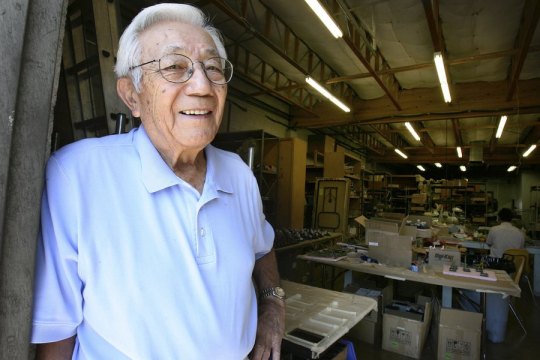
Wataru “Wat” Misaka, an Ogden native who was recognized as the first person of color to play in the NBA, died Wednesday in Salt Lake City, the University of Utah announced. Misaka was 95. A graduate of Ogden High School, Misaka played for Weber Junior College in his hometown and then joined the Utah program. The 5-foot-7 guard contributed to Utah’s victory over Dartmouth in the 1944 NCAA championship game at Madison Square Garden in New York and to the team’s 1947 NIT title, alongside Arnie Ferrin, who remained a lifelong friend.
“We achieved things that a lot of people never will,” Ferrin said Thursday. “He made us a better team and made me a better person. I can’t say I had anybody I enjoyed being around more than Wat."
Only later did Misaka recognize how he had inspired other Japanese Americans during World War II, as they were “really searching for their identity and to be accepted,” he once said.
A 2008 documentary titled “Transcending: The Wat Misaka Story” enabled even his former Utah teammates to understand more about what he went through in college, hearing racial taunts from fans and having his family endure harsh experiences.
“I’m not sure if we were aware of some of the pressures he had to overcome,” Ferrin once said.
That’s why Wisaka is remembered as being “bigger than the game of basketball,” Utah athletic director Mark Harlan said in a statement.
In his nine years on the job, Ute basketball coach Larry Krystkowiak became acquainted with Misaka, who regularly joined Ferrin at special events. Krystkowiak tweeted that Misaka “embodied such an amazing Ute spirit” and “remained close to the program during my time here, and will be deeply missed.”
The Utah High School Activities Association praised Misaka, whose “legacy helped promote inclusion through sports for underserved populations.”

Some accounts described Misaka as “Hawaiian,” as part of an apparent effort to protect him as he played in road games, but he thrived in New York in both the 1944 NCAA Tournament and 1947 NIT.
Having spent two years in the U.S. Army, including an assignment to Hiroshima after the bombing of the city, Misaka rejoined Utah’s basketball program for his senior year.
The Utes beat Kentucky for the NIT championship, with Misaka holding Wildcat star Ralph Beard to one point. Partly based on that performance, the New York Knicks of the league then called the Basketball Association of America signed Misaka (the BAA's final three years are considered part of the NBA's official history).
He played in only three games for the Knicks before being released. Having turned down an offer to join the Harlem Globetrotters, he returned to Utah and completed his degree in engineering.
Thanks largely to the documentary, Misaka’s role in NBA history as the first person of color came into focus in his mid-80s. In a promotional trip, he returned to New York for the first time since his brief Knicks tenure and visited the new Madison Square Garden.
Misaka received further attention in 2012 when Asian American guard Jeremy Lin made a sensational debut with the Knicks. And, in March 2019, when Gonzaga played in Salt Lake City in the NCAA Tournament, Bulldog star Rui Hachimura appreciated the opportunity to meet Misaka as a legendary Japanese American basketball player.
In his hometown, Ogden administrators renamed “Kilowatt Court” at Liberty Park in a 2018 ceremony, citing Misaka’s nickname. On Thursday, the City Council tweeted, “An Ogden legend, he served our country with courage, broke barriers through basketball and will be remembered for the example he set us all.”
Misaka is survived by a daughter a son. His wife, Katie, died in 2017.

Article: Utah’s Wat Misaka, Asian-American pioneer in both college and pro basketball, dies at 95
Other source: WAT MISAKA, FIRST NONWHITE PLAYER IN THE NBA, DIES AT 95
#text posts#wat misaka#asian american history#history#us history#basketball#sports#knicks#nba history#pioneer#utah history#utah#news#asian american
0 notes
Photo

Kings.
Martin Luther King, Jr., with his father and son, 1963.
31K notes
·
View notes
Photo

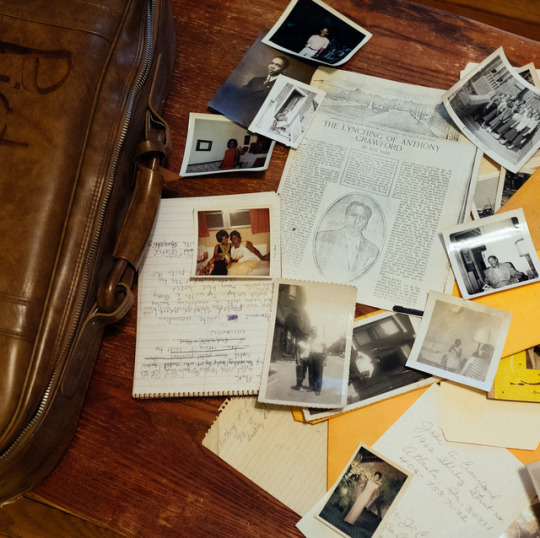
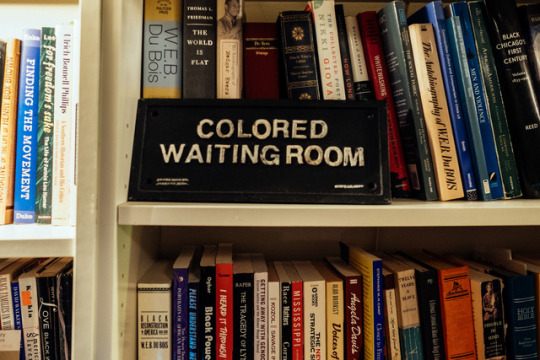







From Grandpa to Emmett to Trayvon, the trajectory of lynching history has shifted over time in America. When Grandpa was killed in 1916, there was no charges brought and no trial. In 1955, Emmett Till’s murder, there was a trial, but no convictions. And then Trayvon Martin, now you have a trial and not-guilty verdict. All the time you have dead black bodies and nobody is ever convicted for the murders. —Doria Dee Johnson
When Doria Dee Johnson was growing up, a large photo of her great-great-
grandfather Anthony Crawford hung above her aunt’s dinner table. Her family would say, “Walk with a sense of pride,” because Grandpa Crawford, as the family called him, defended himself up until his last moments.
A successful businessman and landowner, Mr. Crawford was lynched in Abbeville, South Carolina, in 1916 after disagreeing with a white store owner over the price of cottonseed that Mr. Crawford brought to the market. His last words were, “I thought I was a good citizen. Give my bankbook to my children.” Following the lynching, the Crawford family fled the South in fear for their lives, leaving behind their 427 acres of prime cotton land.
Ms. Johnson explains that upon visiting the land her family was forced to give up, she felt compelled to become an activist and historian. Today, she is a Ph.D. candidate in history at the University of Wisconsin–Madison, where her focus is the migration of African Americans from the South to Evanston, Illinois, during the Great Migration. On the one hundredth anniversary of her great-great-grandfather’s lynching, Ms. Johnson, along with two hundred of her family members and the Equal Justice Initiative, erected a memorial to Anthony Crawford in Abbeville. “The story has been denied for so long,” Ms. Johnson said. “But now, if you go to Abbeville City Hall to do business, you have to walk right past Anthony Crawford to do it. You can’t bypass him anymore.”
Click here to hear her story, and explore The Legacy of Lynching at the Brooklyn Museum now through September 3.
Original photography by Melissa Bunni Elian for the Equal Justice Initiative, 2017
#reblogged#lynching#US history#Emmett Till#The Legacy of Lynching#brooklyn museum#African Americans#African American history#queued
294 notes
·
View notes
Text
Resources & Opportunities for underrepresented students
This list is a quick one of resources, opportunities, internships, programs, and college tours for students (in the US) – mostly students of color, but also sometimes first gen or low-income students.
http://www.inroads.org/
http://www.uncfsp.org/cms/index.cfm
pathwaystoscience.org
http://www.seo-usa.org/
http://www.hacu.net/hacu/HNIP_Benefits1.asp
http://www.nais.org/Articles/Pages/Resources-for-Families-and-Students-of-Color-149206.aspx
http://mcnairscholars.com/
http://glsen.org/article/working-lgbt-students-color-guide-educators
http://www2.ed.gov/about/offices/list/ope/trio/index.html
http://www.nais.org/Magazines-Newsletters/ISMagazine/Pages/The-Psychological-Experiences-of-Students-of-Color.aspx
http://www.collegegreenlight.com/blog/fly-in-programs-for-underrepresented-students/
http://getmetocollege.org/hs/2014-diversity-college-weekends-free-fall-visits-for-rising-seniors
http://www.usnews.com/education/best-colleges/articles/2012/10/12/5-tips-for-students-applying-to-college-alone
http://www.colorincolorado.org/article/28377/
http://www.vanderbilt.edu/gradschool/bridge/APA%20Ethnic%20Survival%20Guide-1.pdf
http://www.aap.ucla.edu/mentoring/pdf/02_a_guide_to_law_school_application.pdf
http://www.blackexcel.org/
http://racerelations.about.com/od/diversitymatters/a/Five-Tips-To-Help-Minority-Students-Choose-The-Right-College.htm
http://www.latinocollegedollars.org/
http://www.hacu.net/hacu/default.asp
http://hsf.net/
http://scholar.harvard.edu/robinbernstein/pages/grad-students
http://www.crunkfeministcollective.com/2011/08/25/back-to-school-beatitudes-10-academic-survival-tips/
http://amoffettb.com/2014/02/28/for-colored-girls-who-want-to-go-to-graduate-school/
http://theprofessorisin.com/2011/08/09/challenges-for-graduate-students-of-color-in-the-academy/
http://sites.nas.edu/wocconference/resources/the-academic-experience-for-women-of-color/
http://www.edutopia.org/blog/predominantly-white-campus-danielle-moss-lee
http://www.hws.edu/academics/career/pdfs/amherst_internshipssoc.pdf
http://internships.about.com/od/specialinternships/tp/Opportunities-For-Students-Of-Color-And-Under-Represented-Groups.htm
http://www.questbridge.org/
415 notes
·
View notes
Link
Early on, New Orleans’ three-tiered racial hierarchy and large population of free people of color (in French, gens de couleur libres) distinguished it from other North American cities. During the colonial and antebellum period, free people of color enjoyed relative affluence and freedom in comparison to enslaved Africans and people of African descent. However, they did not enjoy the same social, political, economic and educational privileges as whites in the city. Even before the Civil War, many free people of color began to describe themselves as “Afro-Creole” or “creoles of color,” adapting the term “Creole” to denote their pre-colonial heritage. Scholars continue to study how the population of free people of color became so substantial in New Orleans; the racial classification of Creoles of color in various time periods; and their roles in colonial, antebellum and postbellum New Orleans society.
#Free people of color#Creoles of Color#New Orleans#history#culture#Afro Creole#people of color#racial hierarchy#US History#resources#research
55 notes
·
View notes
Text
Azellia White, a pioneering African American female pilot, is dead at 106

(CNN)--Azellia White, one of the nation's first African American female pilots, earned her pilot's license just after World War II and found freedom flying in the skies above the Jim Crow South.
"She says you just felt free up there, just free. There weren't any racial barriers or things like that when you're in the skies," her great-niece, Emeldia Bailey, told CNN affiliate KTRK.
White died of "natural causes" September 14, Bailey told CNN. She was 106. Her funeral was held September 21, and she was buried in a cemetery just outside Houston.
Meeting Eleanor Roosevelt inspired her to fly
Though White is regarded as racial pioneer, she flew in the contrails of other African American women who took to the skies.
She was born in June 1913 in Gonzales, Texas, about 75 miles east of San Antonio, and would have been a little girl when America's first black female pilot, Bessie Coleman, earned her wings in 1921, according to the National Women's History Museum.
But in that time of racial prejudice, Coleman had needed to earn her license from France's Fédération Aéronautique Internationale before touring America and Europe giving flight lessons.
White married in 1936 and five years later moved with her husband, Hulon "Pappy" White, to Tuskeegee, Alabama, where he would work as an airplane mechanic, according to the Lone Star Flight Museum in Houston.
First lady Eleanor Roosevelt visited Tuskegee in 1941 and an instructor for the famed Tuskegee Airmen training there took her up in the air in a plane for an hour.
Returning to Washington, Mrs. Roosevelt urged her husband, President Franklin Roosevelt, to deploy Tuskegee's black pilots into air combat in World War II.
"Mrs. Roosevelt helped us," White told KTRK last year. "She said, 'I'm going back and tell them to let those black guys fly,' and she did it, and we took over."
She helped start a flight school
After World War II, White and her husband, along with two other Tuskegee Airmen, created the Sky Ranch Flying Service, which was a flight school, delivery service and airport with a mission to serve the black community during segregation.
White earned her pilot's license in 1946 and flew with Tuskegee Airmen who had come home from the war, according to the Lone Star Flight Museum.
Bailey, her great-niece, told CNN she grew up not far from White and "saw her almost every day."
At family gatherings, White regaled relatives with tales of her aerial adventures. "We would sit and listen to all her stories, about places where she'd flown," Bailey said.
Though she herself never got a chance to fly her great-aunt, Bailey recalled White flying her mother from Tuskegee to Birmingham on shopping trips.
In 2018, White was inducted into the Organization of Black Aerospace Professionals Hall of Fame and Texas Aviation Hall of Fame according to the Lone Star Flight Museum.
Following her inductions, White summed up her journey to KTRK: "I just had a good time in life."

Azellia White, a pioneering African American female pilot, is dead at 106
#text posts#Azellia White#history#African American#female pilot#rest in power#women in history#Black women in history#African American history#Black American history#US history#African American female pilots#pilots#aviation history#race#racism#racial predjuice
1 note
·
View note
Photo
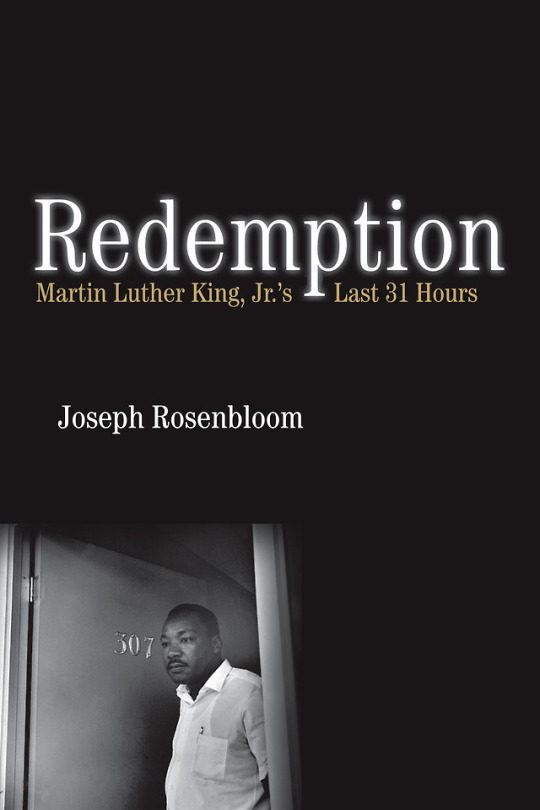
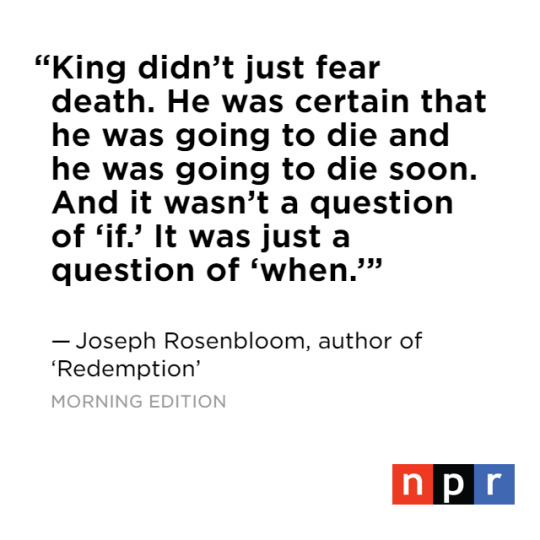
When Martin Luther King, Jr. flew from Atlanta to Memphis on the morning of April 3, 1968, he was not in a particularly good state of mind.
“While the plane was about to take off, there was a bomb threat that was specifically targeted at King and that delayed the departure of the flight,” says Joseph Rosenbloom, author of the new book Redemption: Martin Luther King Jr.’s Last 31 Hours. “They brought dogs onto the plane, they evacuated the passengers. And so the plane arrived an hour or so late in Memphis.”
Read more here.
– Petra
84 notes
·
View notes
Photo



PHOTOS: A Look at Martin Luther King’s Assassination 50 Years Ago Today
Fifty years ago today, the world heard of the tragedy that took place in Memphis, Tennessee—the assassination of Martin Luther King, Jr.
America's greatest civil rights leader and most famous advocate of non-violence was shot standing on the balcony of the Lorraine Motel at the age of 39. King traveled to Memphis to support a march for black sanitation workers on strike for better pay and wages. While Dr. King stood outside room number 306 at the motel, a rifle bullet was fired from a nearby rooming house. He was pronounced dead an hour later, making him the fourth assassination of a high-profile person in the U.S. in less than five years, after John F. Kennedy, Medgar Evers, and Malcolm X.
Joseph Louw, a South African photographer and filmmaker at work on a documentary about King, stayed three doors down from King. When he heard the shot fired and realized he couldn't help, he got his camera out. Louw captured the chaos and emotion that followed, making an image engrained in our memories. As King lay unconscious on the balcony, his peers are pointing at the assassin, who was getting away.
Who was the assassin? Half a century later, there are still questions about why exactly the civil rights leader was assassinated and whether the shooter acted alone. However, federal authorities are confident that James Earl Ray, a career criminal who had escaped Missouri State Penitentiary one year prior, shot MLK. He was spotted at the scene and his fingerprints were identified on the gun. He pleaded guilty, and then received a 99-year prison sentence. But others believed there was more to the story. Conspiracy theories began to circulate right away that even if Ray fired the gun, he did so because of larger forces.
Check out the gallery above to see what the scene at MLK's assassination looked like. Warning: A few of the images are graphic.




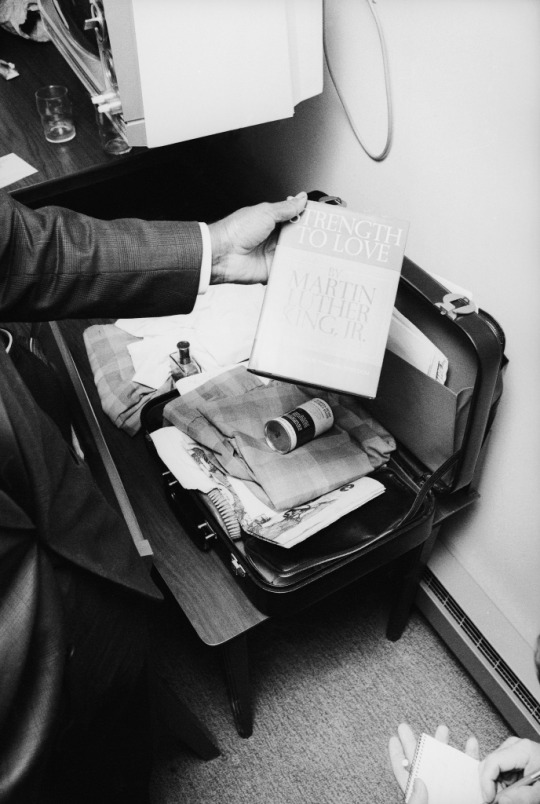

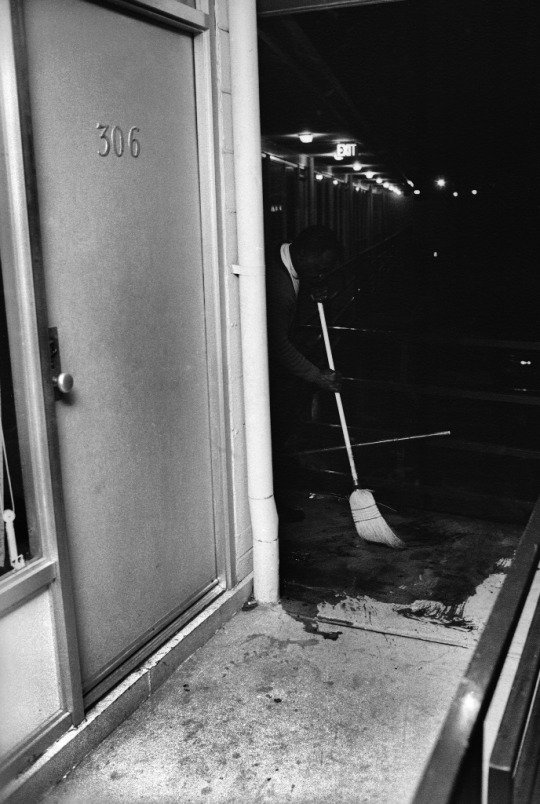
#MLK jr#assassination of mlk jr#martin luther king jr#history#black history#activist#leader#african american history#african american
20 notes
·
View notes
Photo

First modern Britons had 'dark to black' skin, Cheddar Man DNA analysis reveals
The genome of Cheddar Man, who lived 10,000 years ago, suggests that he had blue eyes, dark skin and dark curly hair
The first modern Britons, who lived about 10,000 years ago, had “dark to black” skin, a groundbreaking DNA analysis of Britain’s oldest complete skeleton has revealed.
The fossil, known as Cheddar Man, was unearthed more than a century ago in Gough’s Cave in Somerset. Intense speculation has built up around Cheddar Man’s origins and appearance because he lived shortly after the first settlers crossed from continental Europe to Britain at the end of the last ice age. People of white British ancestry alive today are descendants of this population.
Combing human genome reveals roots of hair diversity
It was initially assumed that Cheddar Man had pale skin and fair hair, but his DNA paints a different picture, strongly suggesting he had blue eyes, a very dark brown to black complexion and dark curly hair.
The discovery shows that the genes for lighter skin became widespread in European populations far later than originally thought – and that skin colour was not always a proxy for geographic origin in the way it is often seen to be today.
Tom Booth, an archaeologist at the Natural History Museum who worked on the project, said: “It really shows up that these imaginary racial categories that we have are really very modern constructions, or very recent constructions, that really are not applicable to the past at all.”
Yoan Diekmann, a computational biologist at University College London and another member of the project’s team, agreed, saying the connection often drawn between Britishness and whiteness was “not an immutable truth. It has always changed and will change”.
The findings were revealed ahead of a Channel 4 documentary, which tracked the ancient DNA project at the Natural History Museum in London as well as creating a new forensic reconstruction of Cheddar Man’s head.
continue
8 notes
·
View notes
Photo


Lucy Gonzales Parsons ((c. 1853 – March 7, 1942) was a labor organizer and orator.
Time Periods: 20th Century
On March 7, 1942, fire engulfed the simple home of 89-year-old Lucy Gonzales Parsons on Chicago’s North Troy Street, and ended a life dedicated to liberating working women and men of the world from capitalism and racial oppression. A dynamic, militant, self-educated public speaker and writer, she became the first American woman of color to carry her crusade for socialism across the country and overseas. Lucy Gonzales started life in Texas. She was of Mexican American, African American, and Native American descent and born into slavery. The path she chose after emancipation led to conflict with the Ku Klux Klan, hard work, painful personal losses, and many nights in jail. In Albert Parsons, a white man whose Waco Spectator fought the Klan and demanded social and political equality for African Americans, she found a handsome, committed soul mate. The white supremacy forces in Texas considered the couple dangerous and their marriage illegal, and soon drove them from the state.
Lucy E. Parsons, arrested for rioting during an unemployment protest in 1915 at Hull House in Chicago, Ill. Courtesy of the Chicago Historical Society.
Lucy and Albert reached Chicago, where they began a family and threw themselves into two new militant movements, one to build strong industrial unions and the other to agitate for socialism. Lucy concentrated on organizing working women and Albert became a famous radical organizer and speaker, one of the few important union leaders in Chicago who was not an immigrant.
In 1886, the couple and their two children stepped onto Michigan Avenue to lead 80,000 working people in the world’s first May Day parade and a demand for the eight-hour day. A new international holiday was born as more than 100,000 also marched in other U.S. cities. By then, Chicago’s wealthy industrial and banking elite had targeted Albert and other radical figures for elimination—to decapitate the growing union movement. A protest rally called by Albert a few days after May Day became known as the Haymarket Riot when seven Chicago policemen died in a bomb blast. No evidence has ever been found pointing to those who made or detonated the bomb, but Parsons and seven immigrant union leaders were arrested. As the corporate media whipped up patriotic and law-and-order fervor, a rigged legal system rushed the eight to convictions and death sentences.
When Lucy led the campaign to win a new trial, one Chicago official called her “more dangerous than a thousand rioters.” When Albert and three other comrades were executed, and four others were sentenced to prison, the movement for industrial unions and the eight-hour day was beheaded. Lucy, far from discouraged, accelerated her actions. Though she had lost Albert—and two years later lost her young daughter to illness—Lucy continued her crusade against capitalism and war, and to exonerate “the Haymarket Martyrs.” She led poor women into rich neighborhoods “to confront the rich on their doorsteps,” challenged politicians at public meetings, marched on picket lines, and continued to address and write political tracts for workers’ groups far beyond Chicago.
Lucía González de Parsons by Carlos Cortez, Linocut, 1986 Chicago, Ill. 90 x 61 cm #2277. Click on image for artist bio and Center for Political Graphics website with order and reprint permission info.
Though Lucy had justified direct action against those who used violence against workers, in 1905 she suggested a very different strategy. She was one of only two women delegates (the other was Mother Jones) among the 200 men at the founding convention of the militant Industrial Workers of the World (IWW) and the only woman to speak. First she advocated a measure close to her heart when she called women “the slaves of slaves” and urged IWW delegates to fight for equality and assess underpaid women lower union fees.
In a longer speech, she called for the use of nonviolence that would have broad meaning for the world’s protest movements. She told delegates workers shouldn’t “strike and go out and starve, but to strike and remain in and take possession of the necessary property of production.” A year later Mahatma Gandhi, speaking to fellow Indians at the Johannesburg Empire Theater, advocated nonviolence to fight colonialism, but he was still 25 years away from leading fellow Indians in nonviolent marches against India’s British rulers. Eventually Lucy Parsons’ principle traveled to the U.S. sit-down strikers of the 1930s, Dr. King and the Civil Rights Movement of the 1950s and 1960s, the antiwar movements that followed, and finally to today’s Arab Spring and the Occupy movements.
This classic song was written for a march led by Lucy Parsons.
Lucy was an unrelenting agitator, leading picket lines and speaking to workers’ audiences in the United States, and then before trade union meetings in England. In February 1941, poor and living on a pension for the blind, the Farm Equipment Workers Union asked Lucy Parsons to give an inspirational speech to its workers, and a few months later she rode as the guest of honor on its May Day parade float. Federal and local lawmen arrived at the gutted Parsons home to make sure her legacy died with her. They poked through the wreckage, confiscated her vast library and personal writings, and never returned them. Lucy Parsons’ determined effort to elevate and inspire the oppressed to take command remained alive among those who knew, heard, and loved her. But few today are aware of her insights, courage, and tenacity. Despite her fertile mind, writing and oratorical skills, and striking beauty, Lucy Parsons has not found a place in school texts, social studies curricula, or Hollywood movies. Yet she has earned a prominent place in the long fight for a better life for working people, for women, for people of color, for her country, and for her world.
—William Loren Katz adapted this essay from his updated and expanded edition of Black Indians: A Hidden Heritage (Atheneum, 2012). Website: williamlkatz.com.
#Black American#African American#black history month#day 1#labor history#history#Lucy Gonzales Parsons#Native American#Black Indian#20th century#women's history#black history
1 note
·
View note
Photo

What It’s Really Like to Work in Hollywood*
(*If you’re not a straight white man.)
The statistics are unequivocal: Women and minorities are vastly underrepresented in front of and behind the camera. Here, 27 industry players reveal the stories behind the numbers — their personal experiences of not feeling seen, heard or accepted, and how they pushed forward. In Hollywood, exclusion goes far beyond #OscarsSoWhite. (Interviews have been edited and condensed.)
#hollywood#inclusion#gender#gender inequality#race inequality#race#actors#actresses#minorities#representation#oscarssowhite#interviews#normalizing#articles#The New York Times#NYT#people of color#women
115 notes
·
View notes
Link
One of the pioneering polar explorers from the Golden Age of Exploration grew up as a poor orphan in Baltimore, and his achievements later in life were largely ignored because of his race.
Matthew Henson was one of the era’s few African-American explorers, and he may have been the first man, black or white, to reach the North Pole. His grueling adventures alongside U.S. Navy engineer Robert E. Peary are chronicled in these dramatic early photos.
#Matthew Henson#African American#history#African American explorers#North pole#polar exploration#photos#photography#us history#american history#black history#black people
429 notes
·
View notes
Photo

Are you a former or current history student (at the graduate or senior undergraduate level) that is interested in Haitian history and would like to be a regular contributor to the Haitian History Blog? If so, please send us an email detailing why you wish to join our team and how you may help us in our goal of “providing Tumblr users with a brief introduction to Haitian history.”
We are especially interested in applicants who:
are either beginning graduate school or towards the end of their undergraduate studies
are comfortable discussing Haitian history
can contribute to at least one post a week (on whichever topic related to Haitian history that interests them)
know their way around Tumblr or are willing to learn
If this interests you, apply now! Also, if you believe some of your followers may meet the above criteria, please reblog this post!
15 notes
·
View notes